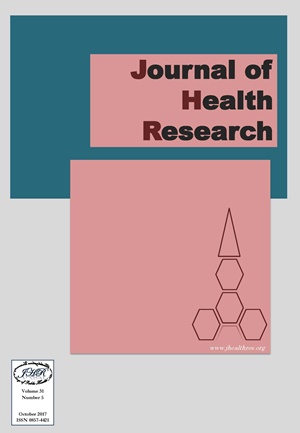The Association between Distribution of Influenza-Like Illness and Climate in Each Zone of Thailand
Keywords:
Influenza-like illness, Climate, Thailand, Ecological studyAbstract
Background: Influenza is a respiratory infection that commonly occurs in humans. According to the World Health Organization, the estimation of influenza-related morbidity rate was 5 - 10% in adults and 20 - 30% in children worldwide, causing 3 - 5 million people to have serious influenza-related illnesses. Climatic factors might affect both the survival and transition of influenza viruses. This study aimed to find the association between distribution of Influenza-like Illness (ILI) and climate in each zone of Thailand.
Methods: Secondary data of ILI cases and climatic factors were extracted from infectious disease surveillance report of the Bureau of Epidemiology, Thai Ministry of Public Health and from meteorological data of the Thai Meteorological Department from January 2011 to December 2015. An ecological study and generalized estimation equation was used to explore the association between Influenza-like Illness and climate in each zone of Thailand.
Results: Weekly ILI rates associated with climate and air temperature was found to have a negative association and played a major role in all zones except for Northeastern and Southwestern zones. Relative humidity was found to have a positive association with the ILI rate in Central, Bangkok, Eastern and Southwestern zones. Rainfall was found to have a positive association with ILI rates in Northern and Southwestern zones but was found to have a negative association in Southeastern zones due to its different climate. The association between rainfall and influenza outbreaks may be indirect, similar to the crowds and public spaces that contribute to increased contact time and influenza transmission.
Conclusion: Using weather information may predict influenza outbreaks and be beneficial to prevention and early preparedness for climate change.






